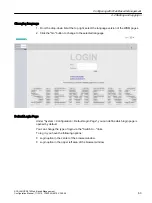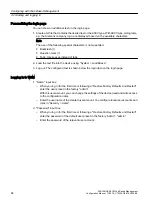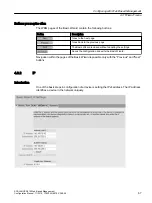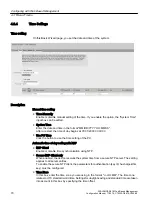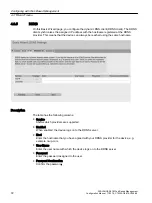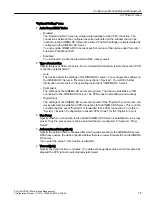
Several VRRP routers in a network segment are put together as a logical group representing
a virtual router (VR). The group is defined using the virtual ID (VRID). Within the group, the
VRID must be the same. The VRID can no longer be used for other groups.
The virtual router is assigned a virtual IP address and a virtual MAC address. One of the VRRP
routers within the group is specified as the master router. The master router has priority 255.
The other VRRP routers are backup routers. The master router assigns the virtual IP address
and the virtual MAC address to its network interface. The master router sends VRRP packets
(advertisements) to the backup routers at specific intervals. With the VRRP packets, the master
router signals that it is still functioning. The master router also replies to the ARP queries.
If the virtual master router fails, a backup router takes over the role of the master router. The
backup router with the highest priority becomes the master router. If the priority of the backup
routers is the same, the higher MAC address decides. The backup router becomes the new
virtual master router.
The new virtual master router adopts the virtual MAC and IP address. This means that no
routing tables or ARP tables need to be updated. The consequences of a device failure are
therefore minimized.
You configure VRRP in "Layer 3 > VRRPv3".
Technical basics
3.6 Redundancy
SCALANCE S615 Web Based Management
60
Configuration Manual, 11/2019, C79000-G8976-C388-08


















